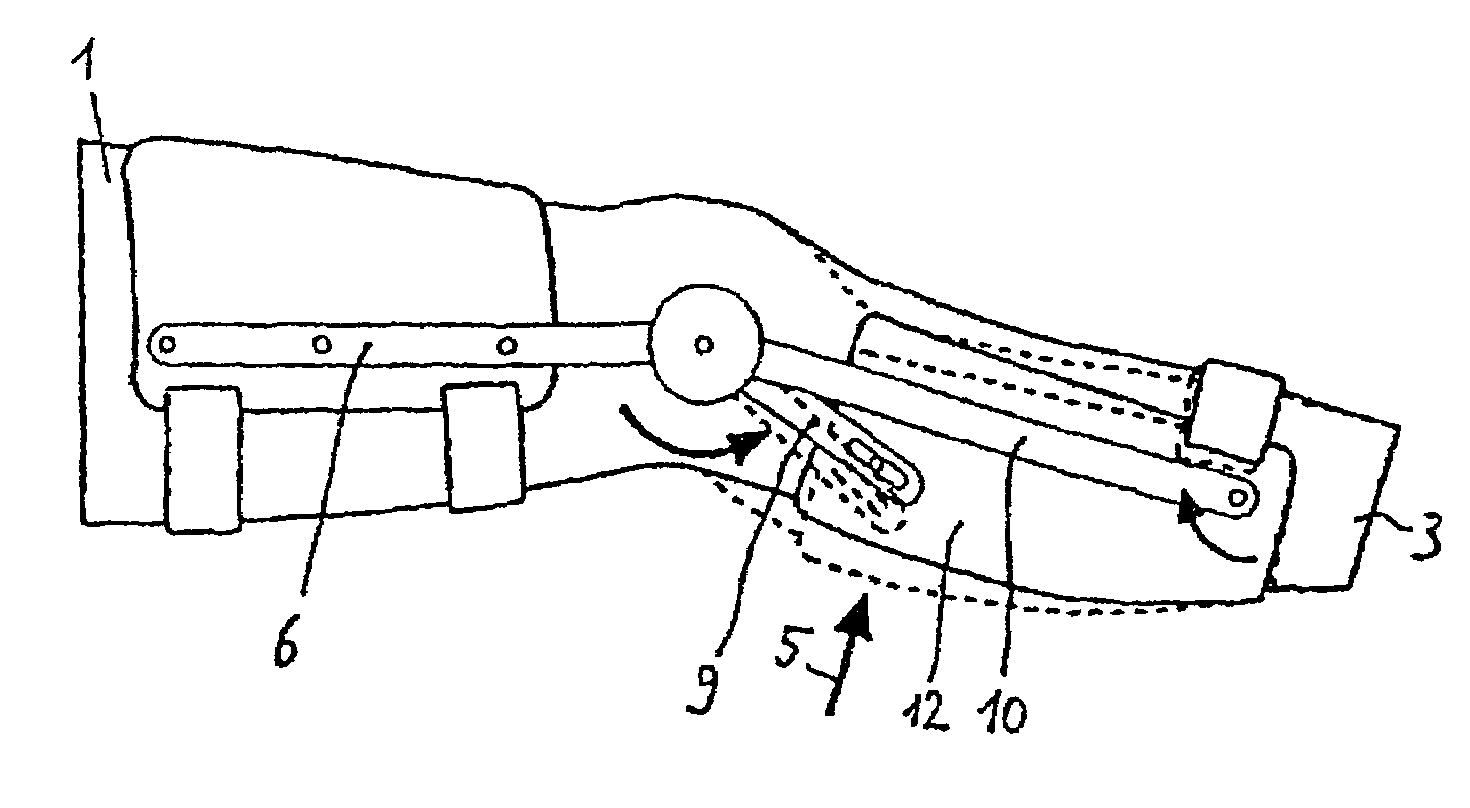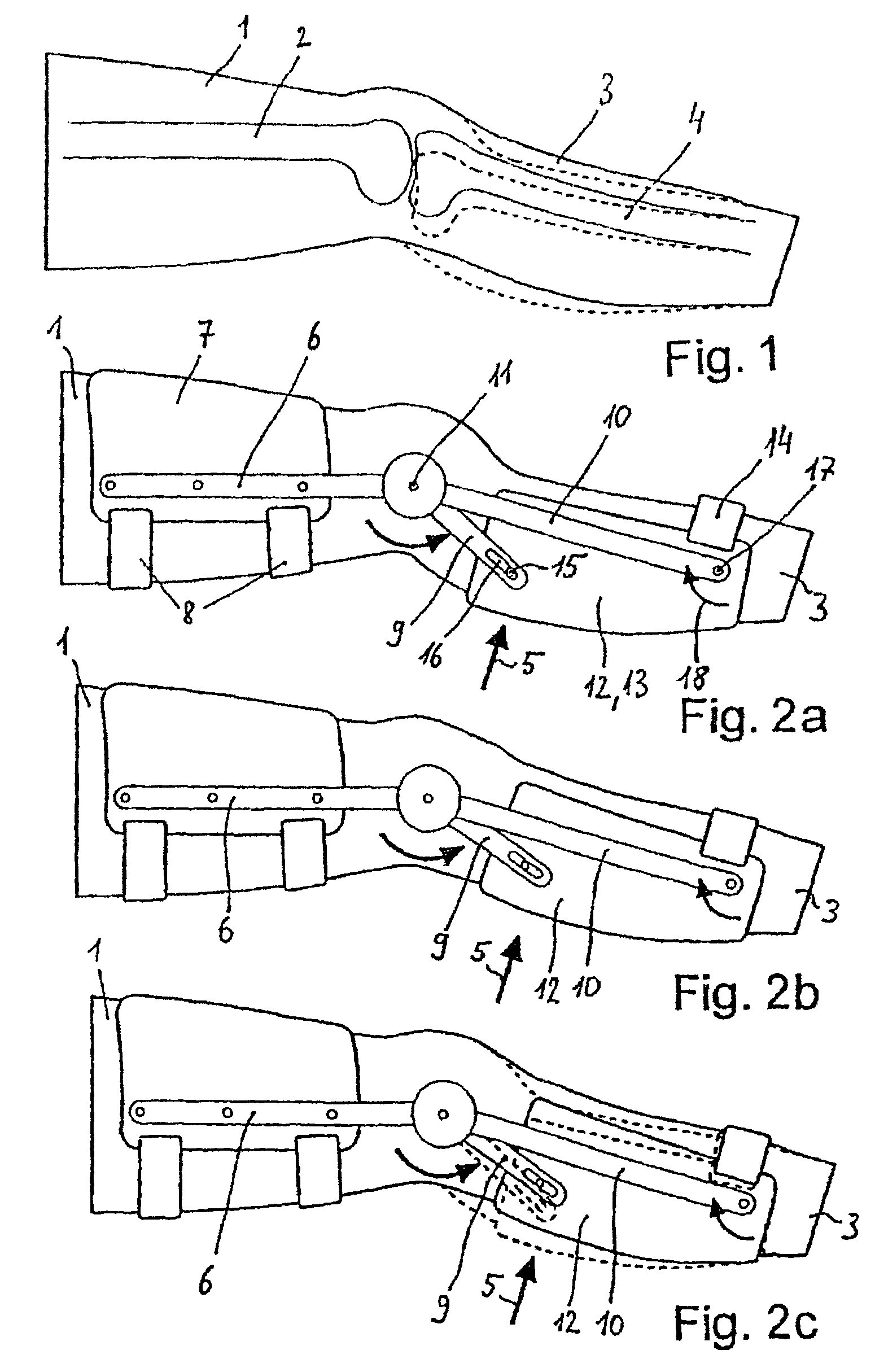Device for applying a ventrally or dorsally directed translatory force in the area of a knee joint
a translation force and dorsal technology, applied in non-surgical orthopedic devices, restraining devices, medical science, etc., can solve the problems of affecting the function of the knee joint, so as to prevent undesired tibial displacement and allow the knee joint to move freely.
- Summary
- Abstract
- Description
- Claims
- Application Information
AI Technical Summary
Benefits of technology
Problems solved by technology
Method used
Image
Examples
second embodiment
[0050]FIGS. 10 and 11 show the device according to the invention in which the thigh bar 6, in the hinge area, has an oblong hole 46 extending in the longitudinal direction of the thigh bar 6. The thigh bar 6 is shown on its own in FIG. 13. The oblong hole 46 means that the screw 23 serving as swivel axis, and thus the entire lower-leg bar device, can move together with the spring housing 19 by a defined distance along the oblong hole 46.
[0051]The nut 24 used in this embodiment is shown in FIG. 12. Like the nut in the first embodiment, this nut 24 again has a cylindrical collar 26 which engages in the oblong hole 46 and is guided by the long side walls of the oblong hole 46 with slight play. The other parts of the second embodiment are identical to those of the first embodiment and are therefore not described again in detail here.
[0052]The way in which the second embodiment works is identical to that of the first embodiment. The shorter bar arm 9 is moved in the arrow direction (see ...
first embodiment
[0053]This causes a reaction force which presses the end area of the lower-leg bar device in the dorsal direction in the hinge area. Since the thigh bar 6, however, is fixed securely on the thigh via the cuff 7, the hinge area of the device is held in a fixed position relative to the knee joint. Upon flexion of the knee joint, however, the force acting in the hinge area seeks to displace the cuff 7 of the thigh slightly in the proximal direction. Upon subsequent extension, by contrast, a tension stress, possibly felt to be unpleasant, would be exerted on the thigh bar 6 if the lower-leg bar device were mounted non-displaceably on the thigh bar, as is the case in the However, the oblong hole 46, which is provided in the thigh bar 6 and is situated laterally and centrally alongside the knee joint, permits a displacement of the bearing along the oblong hole 46, such that tension or compression forces can be avoided in the longitudinal direction of the thigh.
PUM
 Login to View More
Login to View More Abstract
Description
Claims
Application Information
 Login to View More
Login to View More - R&D
- Intellectual Property
- Life Sciences
- Materials
- Tech Scout
- Unparalleled Data Quality
- Higher Quality Content
- 60% Fewer Hallucinations
Browse by: Latest US Patents, China's latest patents, Technical Efficacy Thesaurus, Application Domain, Technology Topic, Popular Technical Reports.
© 2025 PatSnap. All rights reserved.Legal|Privacy policy|Modern Slavery Act Transparency Statement|Sitemap|About US| Contact US: help@patsnap.com



